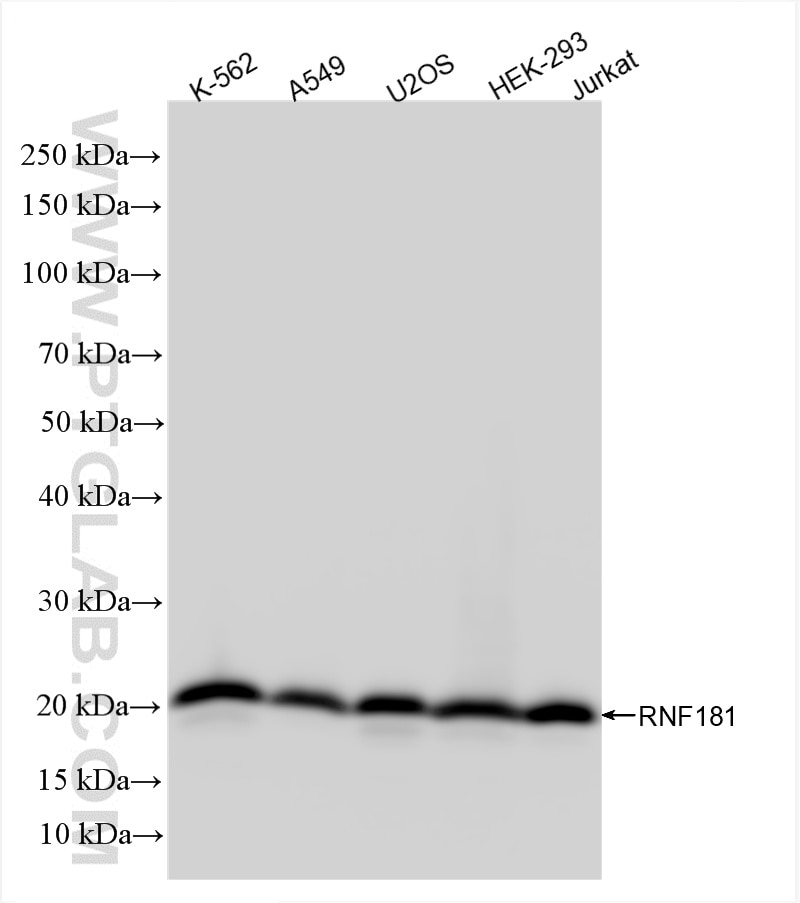Tested Applications
| Positive WB detected in | K-562 cells, A549 cells, U2OS cells, HEK-293 cells, Jurkat cells |
Recommended dilution
| Application | Dilution |
|---|---|
| Western Blot (WB) | WB : 1:5000-1:50000 |
| It is recommended that this reagent should be titrated in each testing system to obtain optimal results. | |
| Sample-dependent, Check data in validation data gallery. | |
Product Information
85735-2-RR targets RNF181 in WB, ELISA applications and shows reactivity with human samples.
| Tested Reactivity | human |
| Host / Isotype | Rabbit / IgG |
| Class | Recombinant |
| Type | Antibody |
| Immunogen | RNF181 fusion protein Ag14233 Predict reactive species |
| Full Name | ring finger protein 181 |
| Calculated Molecular Weight | 153 aa, 18 kDa |
| Observed Molecular Weight | 20 kDa |
| GenBank Accession Number | BC002803 |
| Gene Symbol | RNF181 |
| Gene ID (NCBI) | 51255 |
| Conjugate | Unconjugated |
| Form | Liquid |
| Purification Method | Protein A purification |
| UNIPROT ID | Q9P0P0 |
| Storage Buffer | PBS with 0.02% sodium azide and 50% glycerol , pH 7.3 |
| Storage Conditions | Store at -20°C. Stable for one year after shipment. Aliquoting is unnecessary for -20oC storage. 20ul sizes contain 0.1% BSA. |
Background Information
RNF181, also named as HSPC238, is a 153 amino acid protein, which belongs to the RNF181 family. RNF181 is widely expressed, with highest levels in liver and heart and lowest levels in brain and skeletal muscle. RNF181 as a E3 ubiquitin-protein ligase, accepts ubiquitin from an E2 ubiquitin-conjugating enzyme in the form of a thioester and then directly transfers the ubiquitin to targeted substrates.
Protocols
| Product Specific Protocols | |
|---|---|
| WB protocol for RNF181 antibody 85735-2-RR | Download protocol |
| Standard Protocols | |
|---|---|
| Click here to view our Standard Protocols |



